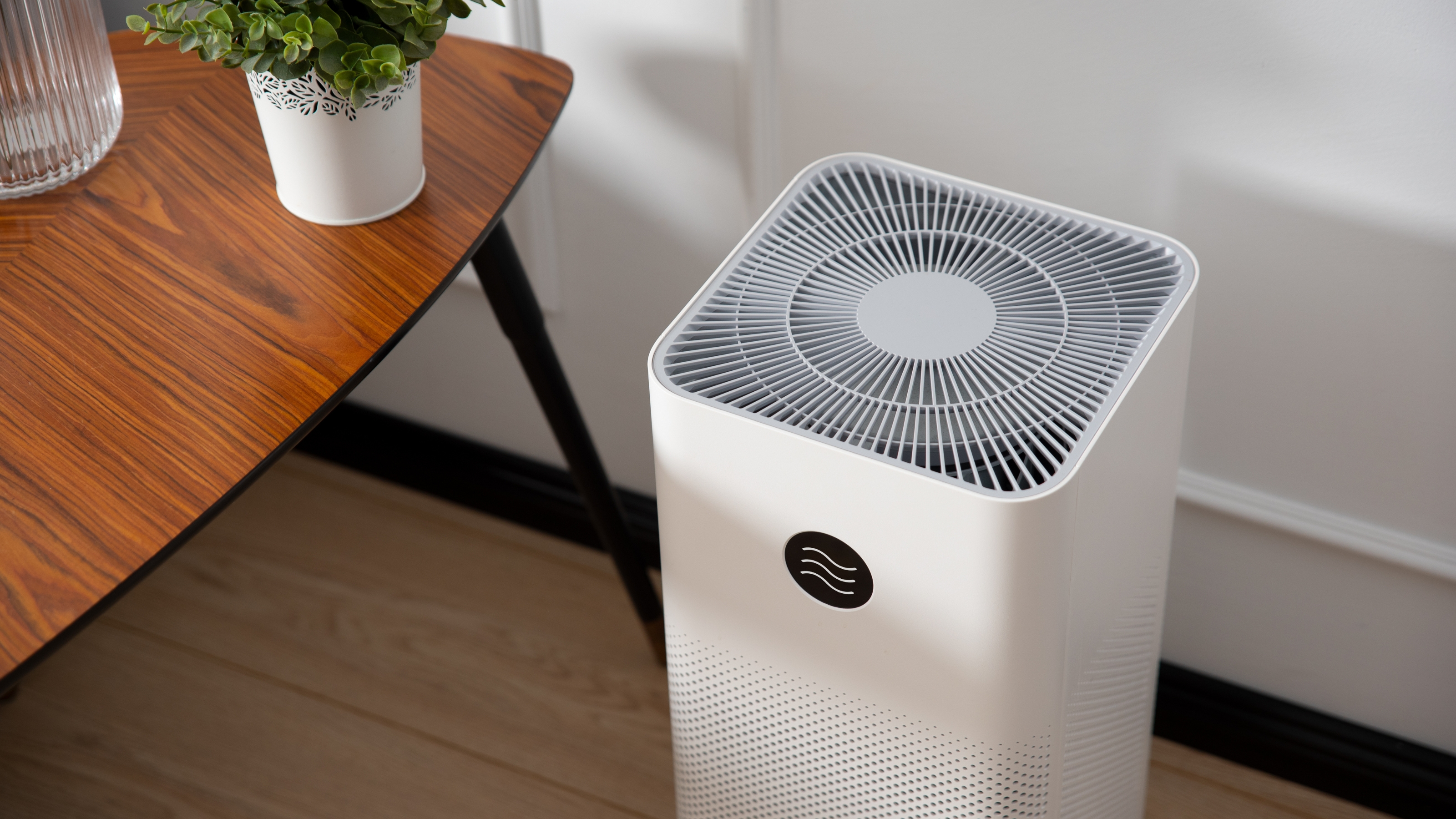

Feeling confused by the whole dehumidifier vs air purifier debate? Don’t panic, because you’re not alone. Both devices look similar, sound similar, and may even appear to do the same sort of thing. So, it’s no wonder that deciphering the difference between the two can be somewhat of a struggle.
That said, there’s one key difference between the two devices and that’s what they are removing from the air. While a dehumidifier removes excess moisture from the air, an air purifier removes contaminants, such as dust, pollen, pet hair, and smoke.
If you're invested in one of the best dehumidifiers, you'll want to know everything it can do. Wondering what the difference is between a dehumidifier and an air purifier, we’ve done some research (so that you don’t have to).
Dehumidifier vs air purifier
An air purifier (like this Aroeve purifier available on Amazon that has over 18,000 five-star reviews) removes contaminants from the air (think: pollen, pet dander, and dust), whereas a dehumidifier removes excess moisture from the air. But the differences don’t end there.
Josh Mitchell, an HVAC technician and the owner of airconditionerlab.com, says: "A dehumidifier's primary function is to reduce the level of humidity in the air. This is crucial in preventing the growth of mold and mildew, which thrive in moist environments. By keeping the humidity at a comfortable level, typically between 30-50%, a dehumidifier can also make your living space feel cooler and more comfortable while protecting wooden furniture, flooring, and instruments from warping.
"On the other hand, an air purifier is designed to clean the air of
pollutants. It uses filters, often HEPA filters, to capture particles like
dust, pollen, smoke, and pet dander. Some models also include activated
carbon filters to reduce odors and VOCs (Volatile Organic Compounds). Air
purifiers are particularly beneficial for people with allergies or
respiratory conditions, as they can help remove allergens and irritants
from the air."

Josh Mitchell is an HVAC technician and the owner of airconditionerlab.com
How do dehumidifiers and air purifiers work?
How each device works is also part of what separates the two; while air purifiers, like our list of highly-rated air purifiers, rely on filters to trap and remove contaminants from the air, before releasing it back into the room, dehumidifiers (like this hOmelabs dehumidifier available on Amazon that has over 40,000 five-star reviews and comes highly recommended) draw the air in, pass it over coils to help condense the moisture in the air, with the excess water collecting in a tank.
Evan Scoboria, owner of the Prime Home Humidity explains: "An air purifier draws in air and filters out contaminants like dust, pollen, and pet dander. It can neutralize odors and airborne bacteria, making them beneficial for people with allergies or respiratory issues.
"On the other hand, a dehumidifier works by absorbing air, condensing and
collecting moisture, and releasing the drier air back into the environment,
which helps prevent the growth of mold, mildew, and dust mites, making the
atmosphere more comfortable in damp conditions."
Evan Scoboria is a contractor and owner of the website Prime Home Humidity where he writes about managing humidity and air quality in homes.
What are the pros and cons of a dehumidifier?
Pros:
- One major pro of a dehumidifier is that it helps to combat humidity issues caused by excessive amounts of water vapor in the air. It's this water vapor that can lead to structural home issues like mold, for instance.
- The great thing about dehumidifiers (if you pick a good one, that is), is that they tend to work quickly to combat the problem, effectively removing water vapor from the air as soon as they're turned on.
Cons:
- One downside to using a dehumidifier is that if the excess water vapor in the air has already caused structural issues or if the structural integrity of the building is what's caused the excess water vapor in the first place, it won’t solve any underlying problems causing the issue.
What are the pros and cons of an air purifier
Pros:
- An air purifier cleans and filters the air, removing pollutants and allergen particles from the air. This is beneficial for people with breathing problems, such as asthma, or allergies, such as hayfever, as a purifier removes things like dust, pollen, dirt, and pet dander from the air.
- Air purifiers are also great for removing nasty odors from the air, making them ideal for use in homes with pets or with limited windows for fresh air flow.
Cons:
- One downside of an air purifier is that they can be noisy to run, especially when they're set to a high setting.
- Another issue with air purifiers (if you're buying a good quality one, that is), is that they can be expensive to buy.
FAQs
Is a dehumidifier or an air purifier better?
Whether an air purifier or a dehumidifier is better depends on what the device is needed for. If you're looking to remove moisture from the air, then a dehumidifier is a better choice. But, if you're looking to clean the air then you need an air purifier.
Are dehumidifiers expensive to buy?
It depends on the type of dehumidifier you buy. If you are looking for an electric dehumidifier then the prices can vary from anywhere between $50 and $200, depending on the quality of dehumidifier and the features you would like it to have.
Now that you know the difference between a dehumidifier vs an air purifier, you can make the right choice for your home (and your health's) needs.
Or, if you choose a dehumidifier, make sure that you think about what the ins and outs are of cleaning a dehumidifier and how to avoid the build-up of mold and bacteria within the system. It's also worth making sure that you know how to use a dehumidifier to remove condensation and prevent mold growth around your home.
Join our newsletter
Get small space home decor ideas, celeb inspiration, DIY tips and more, straight to your inbox!

Hi! I’m Beth Mahoney and I’m a former staff writer at Real Homes. I’ve been a journalist for the national press for the past six years, specializing in commerce and trends-related lifestyle articles, from product reviews and listicles to guides and features. With an eye for pretty things (think: quirky wall prints, scalloped edge furniture, and decadent-looking tableware) but a limited budget, I love nothing more than a bargain buy.